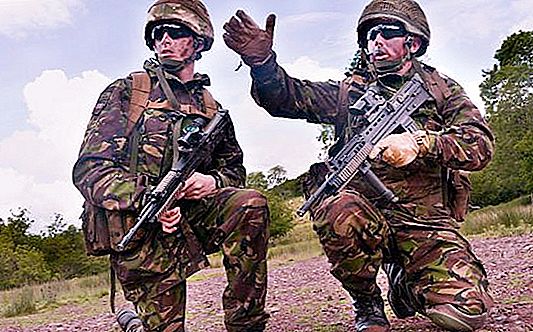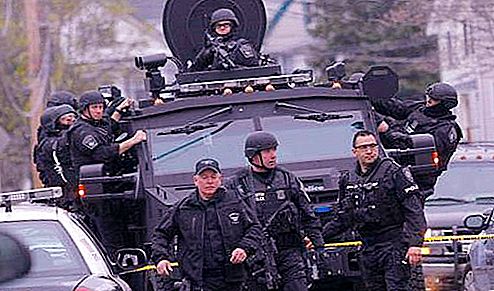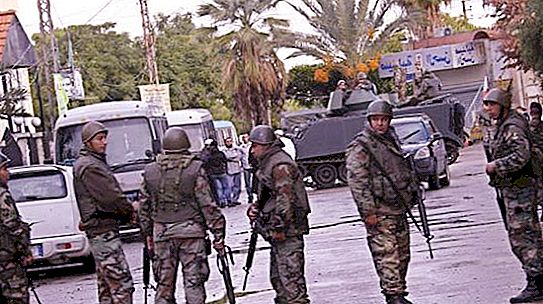In the event of certain negative circumstances threatening the existence of the state or the security of its citizens, martial law can be applied in accordance with the legislation of most countries of the world. What it is? Under what specific conditions can it be introduced? How should you behave yourself? In general, let's find out what martial law means.

The general essence of the term
Martial law - this is the introduction of a special regime of legal relations in the country, which are designed to ensure the preservation of the viability of the state and the protection of its citizens in certain emergency conditions.

Most often, the reason for the introduction of this measure is external aggression or its threat. But in history, there are many known cases when martial law was introduced during internal unrest. This was due to the need to protect civilians or to ensure the preservation of the constitutional order. Similar precedents have occurred both in the United States and in many European countries.
In most modern countries, the introduction of martial law is not the responsibility of the army leadership, but the head of state. But most often with the mandatory approval of this decision by the country's parliament. In some cases, the legislature takes the initiative to impose a special regime on itself.
Often the conditions of martial law provide for the provision of additional powers of the central government to provide more operational management of the situation, as well as a certain reduction in the list of rights and freedoms of citizens.
These are the most typical causes and consequences of the introduction of martial law, which are identical for most countries of the world. Now let’s take a look at the conditions for the introduction and operation of martial law in individual states, find out what their nuances are, and also dwell on specific historical precedents.
Martial law in the legislation of the Russian Federation
Within the territorial borders of the Russian Federation, the conditions for the introduction and procedure for the operation of this regime are established by a special law “On Martial Law”, adopted in January 2002. It was approved by parliament in December 2001.
This act stipulates the entire mechanism for the introduction of martial law in Russia, the basis, reasons, the procedure for its operation, as well as the conditions for withdrawal.
When is martial law introduced in Russia?
The law on martial law provides for the introduction of this regime only in case of external aggression of a foreign state or threat of attack. Internal reasons as a reason for using this tool are excluded. A state of emergency is provided for this case.

The right to introduce martial law in the country in the event of the existence of the necessary grounds has the president of the Russian Federation. He does this by issuing a decree. The parliamentary Duma and the Federation Council must be immediately familiarized with it without fail. SovFed must approve the decree or reject it.
Mandatory attributes of this document are the reason for the introduction of martial law, the territory to which it applies, the exact date the regime began.
What provides for martial law in Russia?
From the moment that is indicated in the decree, martial law begins to operate. What does this mean for ordinary Russians? What should they know about?
First of all, martial law is a limitation of certain human rights and freedoms. Namely: the ban on meetings, rallies, and strikes begins to apply. The activity of parties and other political organizations in the territory where martial law is imposed is prohibited. In addition, a restriction is introduced on the right to move citizens and travel by means of vehicles, a curfew regime is applied, up to a complete ban on entry to certain territories. The period of detention until clarification is increased to 30 days. True, no one has the right to keep you longer than this time.
But not only such actions imply the introduction of martial law. That this is not just a series of measures related to restricting the freedoms of citizens is proved by the presence of other points in the law. First of all, the establishment of special regimes at strategically important facilities, and, if necessary, the evacuation of the latter.
It also provides for the isolation of citizens of a state fighting against Russia who are at the time of hostilities in its territory. Moreover, this is done not only for state security purposes, but also to ensure the inviolability of foreigners themselves.

In addition, censorship is introduced, and in some cases, the departure of Russians abroad is limited.
But the main point of this law is the possibility of engaging the armed forces to ensure law and order.
The abolition of martial law in Russia
Martial law in the Russian Federation, as well as its introduction, can be abolished by decree of the country's president. This is done if the head of state decides that the circumstances that compelled him to introduce a special regime have been eliminated. Martial law is also repealed if it is not approved by the Federation Council. The legislation does not represent other ways to remove a special regime.
Precedents for the introduction of martial law in Russia
In the time of the Russian Empire, such a term as "martial law" did not exist, but there was an identical term - the state of protection. This regime was introduced in territories close to the front of hostilities, as well as in provinces covered by popular unrest. Especially many precedents for the introduction of the state of protection were in 1905-1906, when the country was swept by the revolutionary movement.

In Soviet times, the term “martial law” entered the country's legislation. Only the Presidium of the Supreme Soviet of the USSR had the right to introduce it. But he used these powers only during the Great Patriotic War. Then martial law was introduced in the occupied and frontline territories, as well as at strategically important facilities.
Cases of martial law in the Russian Federation
Since the formation of the Russian Federation to the present time, martial law has never been introduced on its territory. Even during the Chechen war, only the state of emergency and the regime of the counter-terrorist operation were introduced in the territories covered by the hostilities. True, Dzhokhar Dudaev introduced martial law in the territory controlled by the militants, but he did this not as the head of the subject of the Russian Federation, but as the president of independent Ichkeria.
Martial law in Ukraine
Now let's take a look at the situation in which martial law is introduced in other countries. What is it, for example, for Ukraine?

In Ukrainian legislation, this concept also exists. It is regulated by the Law on the Legal Regime of Martial Law. This act was adopted by the Verkhovna Rada back in 2000, but after that it has undergone changes more than once, the last of which was introduced in May 2015, in connection with the hostilities in the Donbass and with a many-fold increased probability of using martial law. What does this mean in the light of the new version of the law?
Innovations in Ukrainian legislation
So, under Ukrainian law, martial law can be introduced not only because of external aggression, but also in connection with circumstances that threaten the independence or territorial integrity of the country.
The decision to introduce this regime is made by the president, but it is approved by the Verkhovna Rada without fail. The effect of martial law can extend both to the whole country, and to its separate part.
According to this law, with the introduction of the regime, a significant restriction of human rights and freedoms is possible. First of all, the right to freedom of movement is limited, a strict passport regime and curfew are introduced. Also, if necessary, compulsory labor service for the needs of the defense industry can be introduced.
Legislatively provides for the possibility of banning the actions of political parties, the Internet, television and other sources of information.
In addition, the possibility of evacuating the population from the places of hostilities and the obligation of residents of the settlements to which the resettlement will be carried out has been fixed, to provide refugees with everything necessary.
The restrictions on human rights that will occur under this legislation in the event of the introduction of a special regime cannot be challenged in international courts.
That is what martial law means in Ukraine.
Martial law in Belarus
Now let's see how the legislation of the Republic of Belarus looks at martial law. What is it under the laws of this country?
In Belarus, the legislative act “On Martial Law” has been in force since 2003. According to him, the basis for the introduction of a special regime is an attack by another state or a military threat from it. But also the presence of centers of armed conflicts directed against the state can be considered a reason for putting martial law into effect. Thus, the law can formally be used not only against an external enemy.
Martial law shall enter into force on the basis of a presidential decree, but with a three-day mandatory approval by the Council of the Republic. The first article of the law states that in the case of the introduction of this regime, a certain restriction on human rights and freedoms and the imposition of additional duties on citizens are provided.
The abolition of martial law follows after the president issued the relevant decree.
Martial law in other countries of the world
So far, we have only talked about the countries of the post-Soviet space. But how is martial law applied in far abroad countries? What is it, for example, for residents of Spain or the United States?
I must say that the legislation on martial law in most democratic countries is very similar. So there is no fundamental difference when comparing with the laws of Russia, Ukraine and Belarus. The same is true in other countries: in the event martial law is imposed, human rights and freedoms are cut. The difference is only in the magnitude of these restrictions.
The only fundamental difference in the laws of various countries is the ability to apply martial law in the event of an internal state conflict. The laws of some countries allow this, while others allow the introduction of this regime only if there is external aggression. So, martial law was introduced at various times during internal protests in the USA, France, and Poland.

It should also be noted that in Spanish-speaking countries, another term is more often legislatively fixed, namely, “state of siege”.
If we talk about countries where there is a strict dictatorship, then the process of imposing martial law is much simpler and actually depends on the will of one person. And the restrictions on rights and freedoms with the introduction of such a regime are much tougher than in democratic countries.




